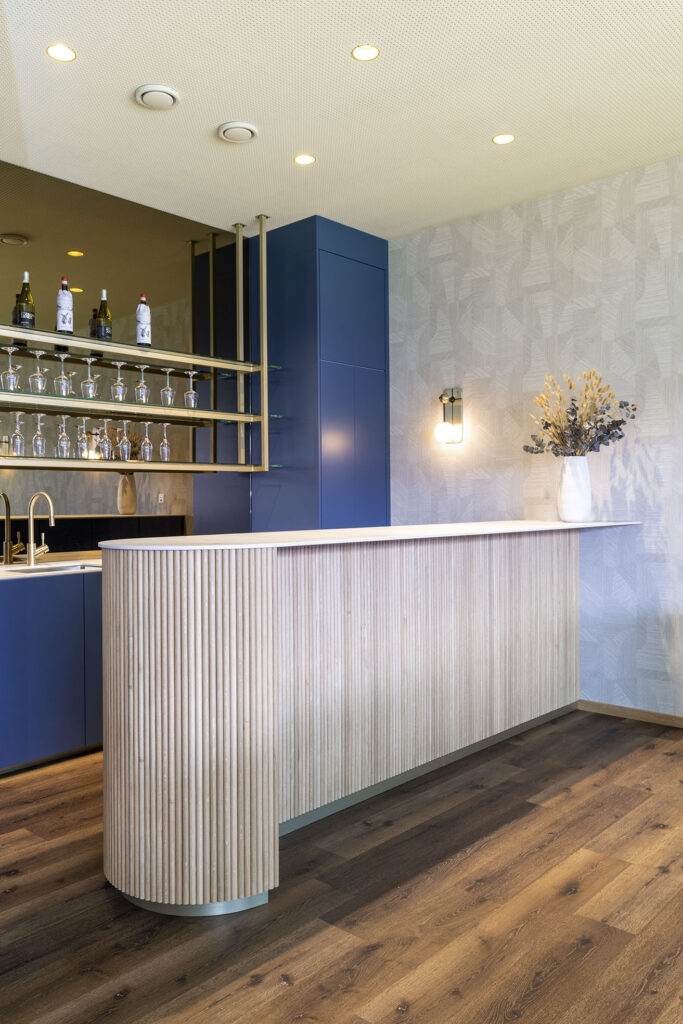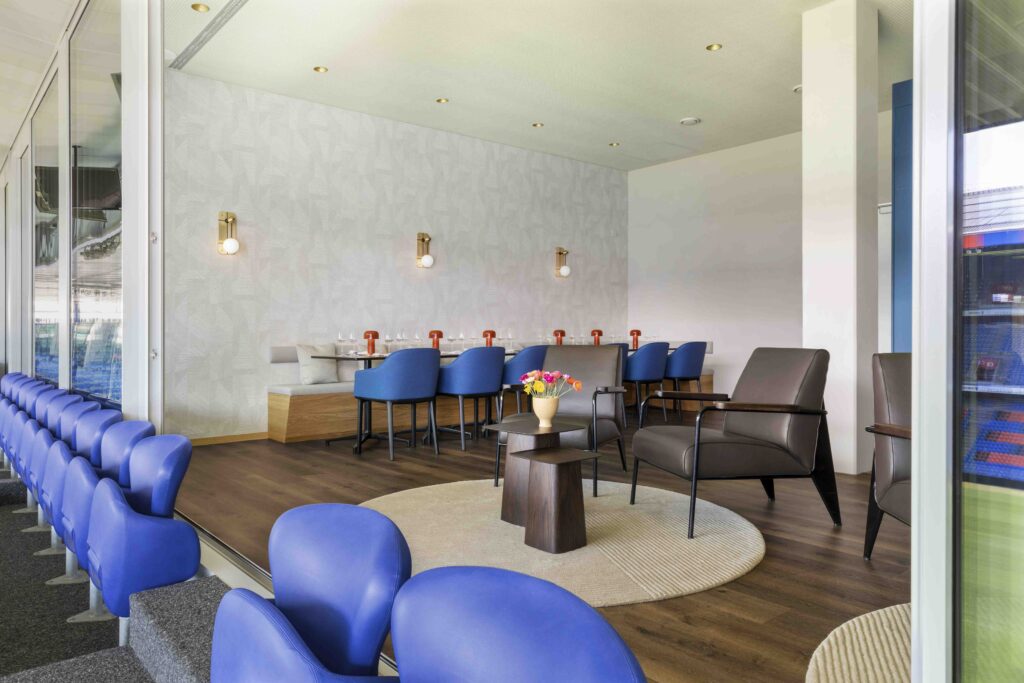In the realm of interior design, creating aesthetically pleasing spaces goes hand in hand with ensuring functionality and comfort. One often-overlooked aspect is acoustics – the quality of sound within a room. Who hasn’t been in the latest hip restaurant, only to find their evening spoiled because the absence of sound absorbing materials results in a headache-inducing noise? Controlling sound can significantly impact our overall experience of a space. In this blog post, we explore how we as a studio use acoustic materials to ensure comfortable interiors also from a sound perspective.

More and more people work in open-plan office settings. This leads to an increase in noise. We are disturbed by the typing of our colleagues, their zoom calls, or the chat at the coffee machine. By integrating high performing acoustic materials which go beyond traditional methods such as adding curtains or carpets in the design of workspaces, we can improve speech intelligibility, productivity, and concentration levels. Similarly, in restaurants and cafes, properly placed acoustic materials can minimise the noise levels. This enhances the ambiance and our overall dining experience. In residential spaces, on the other hand, acoustic materials help improve the sound within an open plan living space, especially when entertaining, or facilitate top sound quality in a home cinema or music room.
How do acoustic materials work? Their porous or fibrous structures absorb sound waves by converting the sound energy into heat through frictional losses within the material. This reduces the amount of sound energy reflected back into the room, thus decreasing reverberation, controlling echoes, and improving sound quality. They come in the form of acoustic ceiling tiles, fabrics, or wall panels.
We used acoustic materials to great effect in a recent project, a VIP lounge in a football stadium, which had to serve as a corporate entertainment as well as a meeting space. We replaced the ceiling and installed lightweight perforated acoustic ceiling tiles by @Saintgobaingroup as part of a dropped ceiling system. Acoustic ceiling tiles come in varied materials such as foam, fiberglass, mineral wool, or wood (have a look at @Topakustik or @Impactacoustic), each offering varying levels of sound absorption. In the same project, we also supplied fabric covered mobile partition walls (“Dancing Wall” by @Vitra) which are useful for presentations but also further absorb noise.
For a retrofit installation, acoustic textiles in the form of curtains are usually relatively easy to instal. We are often called by clients who have moved into their brand-new home and realise that because of the hard surfaces they have chosen – e.g. timber or concrete floors – the acoustics, especially in spaces where they like to entertain, are difficult. There is now a large choice of attractive textiles – from sheers to black-outs in all sorts of textures and colours – which are not only decorative and add warmth to a space but also significantly improve the sound quality. Certain fabrics can absorb up to 80% of the noise and echo (see for example the “Streamer” by @Annettedouglastextiles).
For a home cinema or music room, acoustic wall panels are usually a good solution. They too come in various materials – timber veneer, recycled PET, covered in fabric – as well as assorted colours, patterns, and sizes (have a look at @Texaa and @Autexacoustics) which makes them very versatile and allows us to combine a pleasing design with good acoustics.

We believe that in the pursuit of creating functional and inviting interior spaces, attention to acoustics is paramount. Acoustics are therefore an important consideration in all our projects. Sometimes all it needs is some more soft furnishings, a rug or more art on the walls, but often this is not sufficient. However, thanks to the large choice of attractive acoustic materials available on the market, we can elevate the design aesthetic while improving the quality of sound, and hence life, within the space through a thoughtful integration of acoustic materials in the interiors scheme.